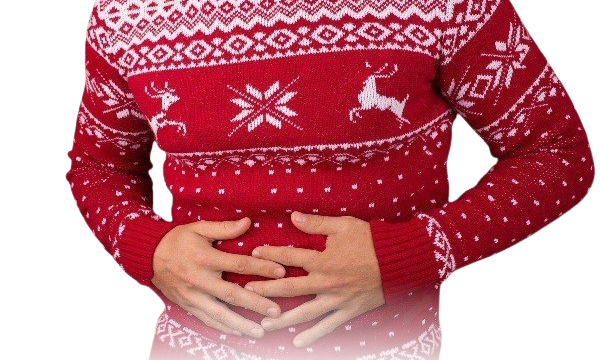Happy Holidays 2023
Pancreatitis: A Cautionary Holiday Tale
In recent years, the incidence of acute pancreatitis has increased sharply in many European countries and the USA (Roberts, Akbari, Thorne, Atkinson, Evans 2013). A study first published in 2013, The incidence of acute pancreatitis: impact of social deprivation, alcohol consumption, seasonal and demographic factors1, chronicles how trends in incidence and mortality for acute pancreatitis may be linked to factors including social deprivation, seasonal effects, and alcohol consumption.
The study showed an elevated rate of alcoholic acute pancreatitis during the Christmas and New Year period, with strong links to social deprivation.
Results
The incidence of acute pancreatitis was 30.0 per 100 000 population overall, mortality was 6.4% at 60 days. Incidence increased significantly from 27.6 per 100 000 in 1999 to 36.4 in 2010 (average annual increase = 2.7% per year), there was little trend in mortality (0.2% average annual reduction). The largest increases in incidence were among women aged <35 years (7.9% per year) and men aged 35–44 (5.7%) and 45–54 (5.3%). Incidence was 1.9 times higher among the most deprived quintile of patients compared with the most affluent (3.9 times higher for alcoholic acute pancreatitis and 1.5 for gallstone acute pancreatitis). Acute pancreatitis was increased significantly during the Christmas and New Year weeks by 48% (95% CI = 24–77%) for alcoholic aetiology, but not for gallstone aetiology (9%). Alcoholic admissions were increased with higher consumption of spirits and beer, but not wine. Additionally, during the 12-year study period, alcoholic acute pancreatitis occurred most frequently among the 34–44 and 45–54 year age groups in both men and women, and was significantly higher among men than women in all age groups.


These trends are not only observable in Western countries. According to a 2017 study, Impact of Seasons and Festivals on the Onset of Acute Pancreatitis in Shanghai, China2, acute pancreatitis increased from 30.5 per 100,000 in 2009 to 39.2 in 2014 (5.1% annual increase), with greatest increases in alcoholic (19.8% annually) and severe AP (13.7% annually). Time series analysis indicated that prevalence was significantly higher form February to May (spring) and from September to October (autumn). Acute pancreatitis increased during Chinese festivals, 17% and 28% greater than that observed on weekdays and weekends, respectively. Prevalence was greatest in Chinese Spring Festival week, with Chinese festivals associated with a high prevalence of AP.
Citations
1. Roberts, S.E., Akbari, A., Thorne, K., Atkinson, M. and Evans, P.A. (2013), The incidence of acute pancreatitis: impact of social deprivation, alcohol consumption, seasonal and demographic factors. Aliment Pharmacol Ther, 38: 539-548. https://doi.org/10.1111/apt.12408
2. Wu D, Tang M, Zhao Y, Zhou S, Xu X, Wang F, Liu H, Wu M. Impact of Seasons and Festivals on the Onset of Acute Pancreatitis in Shanghai, China. Pancreas. 2017 Apr;46(4):496-503. doi: 10.1097/MPA.0000000000000795. PMID: 28196016.
